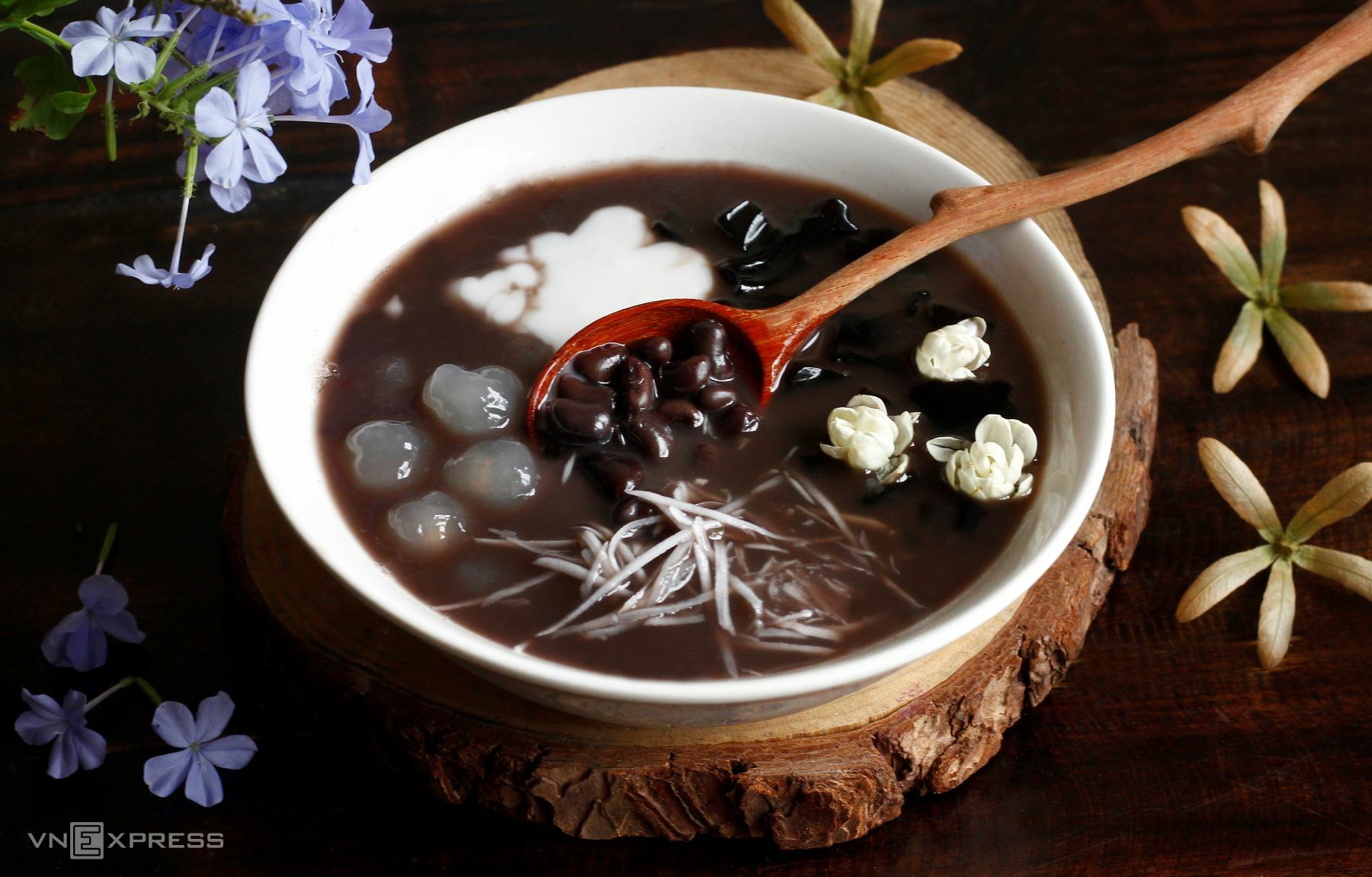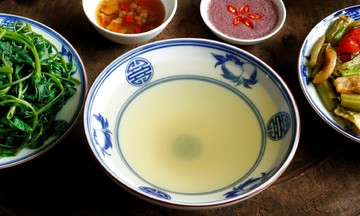Cooking bean desserts (black beans, red beans) perfectly, achieving a soft, flavorful texture without the beans falling apart, while maintaining their shape and a rich sweetness, is no easy task.
Many dessert vendors have a secret: soaking the beans, freezing them, and then cooking them, or directly adding ice cubes while simmering. This method not only shortens the cooking time but also enhances the texture and flavor of the beans.
Dried beans naturally contain very little water. When beans are soaked until saturated and then frozen, the water inside expands as it freezes, fracturing the cell walls, which are made of sturdy cellulose and hemicellulose.
This partially broken structure becomes more "open," allowing hot water to penetrate quickly during cooking. As a result, simmering time is reduced, and the beans cook evenly and become tender while maintaining their structure.
 |
Black bean dessert, a refreshing summer treat. Photo: Bui Thuy |
If you don't have time to freeze the beans beforehand, there's another variation: add a few ice cubes to the pot of boiling beans. The sudden temperature drop causes the bean skins to contract and then expand as the water returns to a boil. Each contraction and expansion creates tiny cracks on the bean surface, allowing water and heat to penetrate deeper. Simultaneously, the thermal shock slows down the breakdown of the starch inside, ensuring the beans cook evenly without becoming mushy.
Modern science explains this phenomenon through the changes in the permeability of plant cell membranes when exposed to rapid temperature fluctuations. The change in osmotic pressure between the inside and outside of the bean, combined with the mechanical deformation of the cell wall, makes the water absorption and softening process more efficient. This same mechanism explains why blanching vegetables before stir-frying and then shocking them in cold water results in crispier, brighter green dishes.
Nutritionally, freezing soaked beans doesn't significantly reduce vitamins or minerals, especially if stored airtight and for a short period. Compared to using alkaline substances like baking soda for quick softening, this method is safer and doesn't affect the natural flavor. In a frozen environment, enzyme and microbial activity is inhibited, preserving the ingredients until cooking.
In practice, this method can reduce cooking time by 20-40%, depending on the type of bean and cooking conditions. For large batches of dessert, this translates to significant savings in fuel and effort. The beans cook evenly, the dessert liquid remains clear, and the sweetness permeates easily, resulting in a harmonious balance of texture and flavor.
 |
Tenderly simmered beans, ready for sugar. Photo: Bui Thuy |
When freezing beans, keep a few points in mind: Ensure the beans are fully saturated before freezing, as dry beans won't form enough ice crystals to break down the structure. Use airtight packaging to prevent surface dehydration or absorption of odors in the freezer. Storage time should be short, preferably within one week, to maintain optimal quality.
From the perspective of yin and yang in cuisine, beans are considered cooling (yin). Freezing further increases the yin aspect. Cooking over fire adds the yang element, balancing the dish. Therefore, even when consumed in the summer, bean dessert won't cause digestive upset and is easier to digest. According to the five elements, beans belong to Wood, soaking and freezing water is Water, and cooking with fire is Fire. The Wood-Water-Fire sequence creates a cycle of mutual generation: Water generates Wood, and Wood generates Fire. After "hibernating," the beans accumulate energy, which is quickly released when exposed to fire, resulting in tenderness without prolonged cooking. This is a subtle interaction between natural laws and culinary techniques.
Another crucial factor is the timing of adding sugar. If sugar is added too early, the sugary liquid creates a hypertonic environment, hindering water absorption and slowing down the softening process. This explains why some struggle with beans that remain tough despite long simmering times. Sugar also raises the gelatinization temperature of starch, requiring more heat for the beans to soften. Therefore, both traditional wisdom and scientific reasoning agree: add sugar only when the beans have reached the desired tenderness.
Bui Thuy












